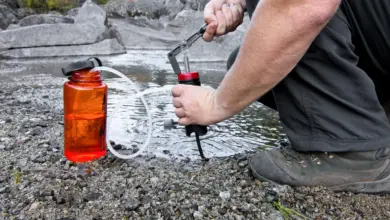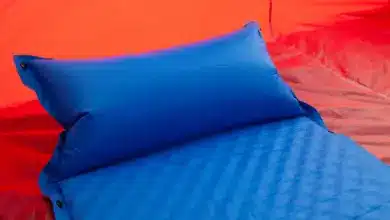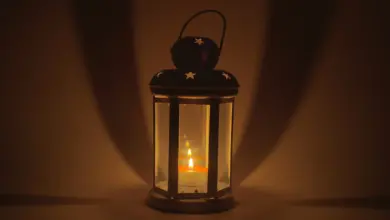Differences Between Summer and Winter Tent
Differences Between Summer and Winter Tent
A lot of summer campers transition into winter and wonder if they need a special tent for winter camping, or if they can just use their 3 season tent in winter. Well, we’ll talk about the differences between summer and winter tents and if you really can use a summer tent for winter.
So, what is the difference between a summer and winter tent? Winter tents are designed to withstand heavy wind and heavy snowfall. Winter tents are stronger, roomier, and heavier than summer tents and offer less ventilation.
Summer vs Winter Tent Differences
Tent designs can vary a lot. Some people use simple tarp shelters and others campers use more permanent structures. But in general, there are a few primary differences between a summer tent and a winter tent.
But before we get started, a quick note about terminology. Usually, when talking about tents, a 3 season tent is the same thing as a summer tent, and a 4 season tent is the same thing as a winter tent. There are even “5 season” tents, which we will talk about in a bit. Okay, let’s go!
Summer Tents
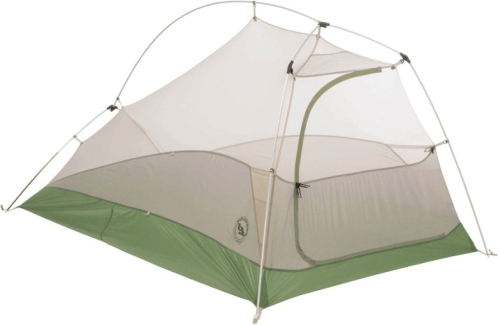
A summer tent, or a 3 season tent, are tent designed to be used during the spring, summer, and fall seasons. Their main function is to provide rain and wind protection and keep those pesky mosquitos away.
Summer tents offer:
- light pole structure
- light materials
- lots of ventilation
Most summer tents are double wall tents (2 layered). Doubled wall tents are tents that have a removable tarp or rainfly attachment. The inside layer offers airflow, while the outside layer provides rain protection.
The Big Agnes tent featured above is a great example of a double-wall tent for summer. The mesh sides offer a lot of ventilation, but you can also add a rainfly to the outside to make the tent waterproof.
While you can make a summer tent waterproof with a rainfly, it’s not a good way to winterize a summer tent in extreme conditions. Airflow can still get underneath the tarp and make you chilled.
There are also a ton of different designs for summer tents. Some are ultra lightweight for backpacking and require trekking poles to stand up. Others are free-standing tents. Freestanding tents are tents that can stand on their own without using tent stakes.
Winter Tents
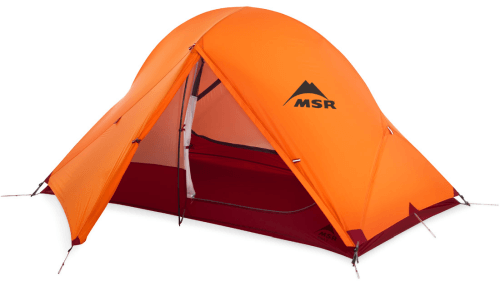
Even though winter tents are called 4 season tents, they are really only ideal for winter and cooler weather. If you use a winter tent in summer, it won’t provide much airflow and you won’t be a happy sleeper.
There are however extended season tents that are better than typical summer tents but as sturdy as winter tents.
Winter tents offer:
- Stronger poles
- A greater number of poles
- More durable material
- Less ventilation
- More space
- Steeper slopes to shed snow
As you can see, there are a lot more things that are considered when it comes to winter tents. Overall, they need to be stronger to shed snow and keep out the wind.
These tents have studier and stronger poles that intersect giving the tent more structure. There are also 1 or 2 more poles on winter tents compared to summer tents.
Unlike a summer tent, you can’t afford to have the wind blowing through your tent. Winter tents offer minimal ventilation which can often time be zipped up. You’ll want some ventilation though to let moisture escape and for breathability.
Winter tents can also be singled-walled or doubled-walled. Single-wall tents are made from waterproof and breathable material but don’t have a rain fly.
Single wall tents work best in cold dry conditions to minimize the condensation that can accumulate.
Double-wall winter tents have a rainfly that extends all the way down the tent for greater protection. These are better for managing condensation as the condensation can escape the first layer and dry in the air.
Another perk of winter tents is they are roomier. Having the extra room is really nice when you need to change in and out of your cold weather clothes.
While winter tents seem more “robust”, there are still ultralight tents for winter camping. MSR is one company that sells a tarp shelter that has no floor designed specifically for winter.
You may also like Ways to Camp Without a Tent
5 Season Tents
What are 5-season tents? 5 Season tents are tents designed for extreme or long-term situations. They are ideal for arctic-like conditions where high winds and snowfall may occur. 5 Season tents are used among climbers, and guides, for commercial camping use.
Most of the hiking and camping population won’t have any need for a 5 season tent. These tents are used in some of the most extreme conditions – think artic.
Heated Tents
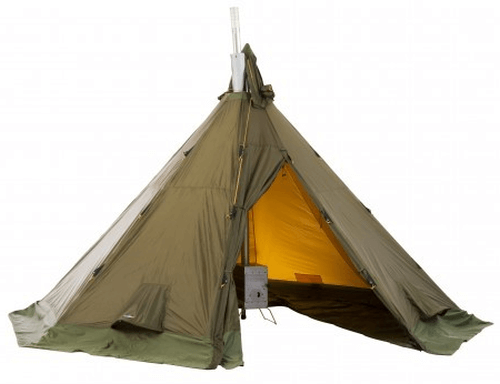
If you ever spent the day outside in the snow getting cold, you know there’s nothing more you want than get out of your wet clothes and get warm. Well, that’s pretty much what heated tents are for.
Using a stove inside your winter tent is called “hot tenting”. It does require a special tent and a stove, but the benefits can be well worth it.
These winter tents with stoves are usually a tipi or pyramid shape (these shaped tents are called “mids”). They have a stove jack. Stove jacks allow stove pipes to pass safely through your tent.
Of course, anytime you have a stove inside your tent, you’ll want to be extra careful of fire hazards and accidents among pets and children.
You may also like Easiest Tents to Set Up by Yourself
Can You Use a 3-Season Tent in Winter?
Yes, you can use a 3 season tent in winter, but it really depends on the tent and the conditions. If you camping in mild weather where there isn’t strong winds or snowfall, a summer tent can be fine for winter camping.
This is a pretty big convenience if you don’t plan on camping in the winter all that often. You can bring your 3-season tent winter camping and be all set.
A few things to consider. The first is ventilation. If your tent has a lot of ventilation, it’s not going to be comfy inside your tent with the wind blowing through.
Solving this issue is possible. For greater wind protection, you’ll want a tent with solid walls, or a rainfly or tarp that extends almost to the ground.
Having a tent with a bathtub floor will help block the wind as well, and the higher the better.
Another thing to consider is snowfall. Ideally, you’ll want a summer tent with steep walls to shed any snow.
If you do find yourself in a snowstorm, waking up every so often to knock the snow off your tent isn’t a bad idea. Too much snow can collapse your tent
And of course, if you camping in harsh conditions, then a 3-season tent will not be adequate. You’ll want to get a real 4 season or mountaineering tent.
At the end of the day, needing a special tent for winter camping really depends on the conditions and the style tent you have. If it won’t be snowing or windy, then a summer tent is often okay to use.
Are 4 Season Tents Warmer?
Four-season tents are warmer in that they prevent heat loss from the wind and can hold in heat more. While there is no 3-season tent temperature range, a 4-season tent can be a few degrees warmer than a summer tent.
Winter tents often have thicker material and are double-walled, helping prevent heat loss.
While winter tents don’t actually produce any heat on their own, we have come up with 27 ways to make your tent cozy and stay warm this winter.
What to Look for When Buying a Winter Tent
Winter tents come in many styles, some ultralight, and some heavy. As a general rule, the bigger the tent, the heavier and more expensive it will be.
Along with picking the right style of tent and how many people it will hold, there are some features that every good winter tent will have:
- Vestibules – Vestibules are extra coverings attached to the tent to store gear. They are meant to keep your gear protected and accessible while out of the way of the sleeping area.
- Guylines / Tie downs – The more guylines a tent has, the more secure it will be. The most secure tents have tie-downs in the middle of the tent and not just the sides.
- Dual entrances – Being able to get in and out of the tent in either direction will prevent wind from blowing inside and keep you from crawling over your tentmates in the middle of the night.
There are some other features that make a tent more livable too, such as pockets clips, and cords to hang items from inside the tent.
A lot of winter tents are brightly colored too. This helps them be seen during snowstorms.
You may also like Best Safe Tent Heaters
What You Need to Know
The main difference between a summer tent and a winter tent is that winter tents offer greater protection against the elements. They must be strong enough to withstand high winds and snowstorms.
Winter tents have less ventilation and condensation becomes a greater issue.
You can use a summer tent for winter camping, but it really comes down to the type of tent you have and where you will be camping. If you are camping in the mountains, a summer tent will just not cut it.
Summer tents can be used in the winter if they have closed-off insulation and a proper rainfly or tarp.
As always, anytime you camp in the winter backcountry, you’ll want to be prepared and practice good winter safety practices.
—
Photo credit: blackswan / CC BY
